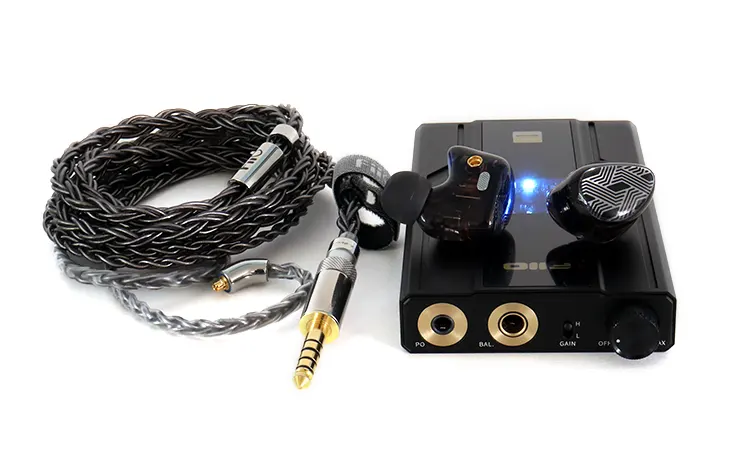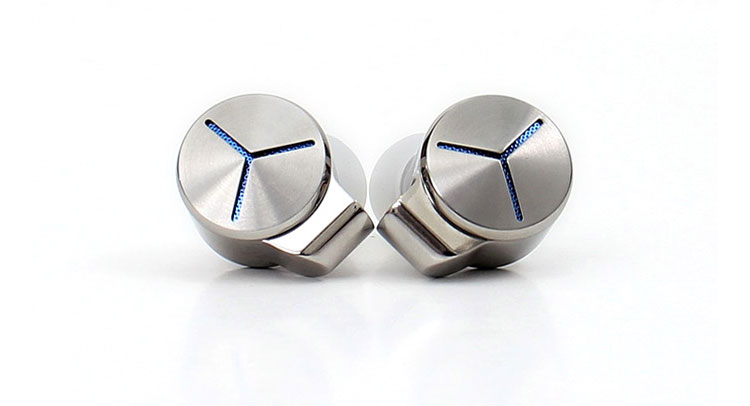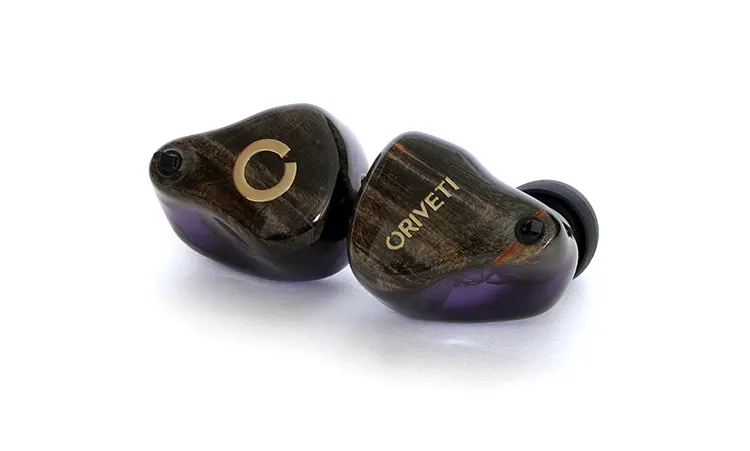Synergy
Efficiency & Sensitivity
The FiiO FA19 is not as efficient as one would think by glancing at its 10Ω rating and the 106 dB /mW@1kHz sensitivity rating.
They take well to be fed decent amounts of power but the sound signature will not improve with more power and is more dependent on the overall characteristics of the amplifier being used.
The FA19 seems content with a FiiO KA5 on the single-ended side’s 122mW but can also hang tough with amplifiers like the 11.5 watts per side SMSL SH-X.
Pairings
The FiiO FA19 is a good candidate for those who want to hear the differences between amplifiers, except for monitoring height in the soundstage which is not revealed with any of the amplifiers in my arsenal on this set.
This IEM will mold itself to the amplifier being used. For example, the iFi Audio NEO iDSD 2 displayed Burr-Brown’s warmth. The Rose Technics RT-5000 portrayed its clean character. The iFi Audio GO bar Kensei showcased the K2HD feature, etc.
In that light, one has to choose an amplifier that is of your preference in tonality because the soundstage remained the same with most amplifiers, even with some dongle DACs like the KA17.
The KA5 naturally produces a smaller soundstage compared to the KA17 with other IEMs but their size was barely noticeable and produced similarly sized soundstages on the FA19.
Select Comparisons
For every comparison below, I used black rubber tips and the SMSL SU-X and SH-X combo for listening tests. I also used 4.4mm Pentaconn connectivity on each set.
FiiO FX15
Technical
There are rumors that FiiO will soon release some upscaled models that will take their TOTL spot within their IEM lineup. Before the release of the FA19, the top model was the FX15 but it has been dethroned.
The FX15’s niche is that it’s equipped with Sonion tweeters plus many of FiiO’s patented designs. Another design difference is the inclusion of a 10mm DLC dynamic bass driver.
FiiO also incorporated two sound signatures accessible via a micro switch but one of the options simply shuts off the Sonion tweeters which I find to be counter-intuitive and against the FX15’s original concept design which emphasizes high-frequency production.
Design
The FX15 and the FA19’s shell seem to be made with an identical template and both models seem to share the same shape and design, except that the FA19 went with a grey pattern instead of a purple theme.
The shell color scheme improved on the FA19 because the FX15 uses purple and the resin has an almost brown tint which is not an ideal match, However, the FA19’s grey and black color scheme is a better match.
Both these models share the same output nozzle screen, the same vent, and of course, the same expanded MMCX connectors that have enough connection security and quality that it restored my faith in this connector type.
I’ve had issues in the past with MMCX connectors and intermittence but never with one incorporated on a FiiO IEM up to now.
Both IEMs come with the same amount of tips, minus one set and the same amount of accessories. It also seems as though FiiO included the same cable assembly and the same two tips.
These cables are outsourced to Fabrilous and they do a good job at the assembly of these cables. They’re one of my favorite stock cables.
Performance
Do not discard the FX15 just because it is offered at a lower price tag. The FX15’s high frequency can produce highs that at times and to my ears are superior to the FA19’s high frequency section.
However, the Sonion tweeters can get hot at times and if you prefer tame over aggressive, then favoritism tilts to the FA19.
Bass response is another give and take because the FX15 does produce a heavier impact but the speediness of the new generation BA drivers from Knowles does show competitiveness here. The FA19 might also present bass with improved note clarity and distinction.
The FX15 midrange has more presence but tonality is similar. Both portray a natural timbre, but the inherited smoothness of the FA19 is undeniable, and if you prefer smooth over increased presence, the scale tilts to the FA19.
The bottom line here is if you prefer a forward presentation, lots of presence, high-frequency energy, and bass impactfulness, then go for the FX15. The FA19 are smoother, more technical, have a faster bass response, and the newest BA tech.
FiiO FA7s
Technical
The FA7s uses a 2+2+2 BA driver configuration and is tied together by a 3-way crossover similar to the FA19.
The driver array consists of Knowles off-the-shelf drivers including two HODVEC bass drivers, and two 33518 drivers. However, the two remaining drivers are not labeled, undisclosed, and seem to be custom BA drivers that handle the high frequencies portion of the spectrum.
Design
One would never guess these two IEMs come from the same maker on sheer visual cues. Even less so, one unfamiliar with these models would never guess they’re from the same FiiO FA all-BA IEM lineup.
They’re contrasting models in design. The FiiO FA7s employ an all-metal construction. The composite shell is composed of three sections: a center section which is in a cylinder shape, the vented backplate, and the front angled nozzle section.
FiiO also used the expanded MMCX for connectivity and supplied a similar cable assembly that includes the 2.5mm connector.
My question is why does the cheaper model have better connectivity? That makes no sense to me and should be the other way around.
Performance
I have a feeling FiiO was hesitant in making another BA and still is because the FA7s punches above others in its price tier and is hard to beat. It’s a warm, coherent all-BA set that displays technical abilities beyond most similar competitors.
What improvements do you get on the FA19? Technical abilities are best displayed by the FA19. However, the midrange section produced on the FA7s is close to the FA19’performance level and somehow portrays female vocals more realistically.
But the FA19 does everything else better. The bass has more body, more speed, and better note distinction. The treble, although not stellar, has improved.
The FA19 provides the most musicality and the more likable tonality that is closer to true-tone realism between the two.
ORIVETI OH700VB
Technical
The ORIVETI OH700VB has a lot in common with the FA19 in that it uses multiple drivers within a universal-fit resin shell. But the OH700VB throws into the mix a 10mm dynamic driver for bass reproduction.
On paper, the OH700VB sounds generic with its 20 to 20kHz frequency response. The 12Ω is also a very low impedance and though the FA19 has a lower 10Ω rating I never ran into driving issues with any of my gear. Even with the amplifier that produced the funkiness with the ORIVETI, the GO Bar Kensei.
Design
ORIVETI uses medical-grade resin and real wood back plates but they mar their beauty with visible microswitches, but I shouldn’t complain about them because they proved their worth. The fact that you can flip these switches on the fly is a very good idea.
On the FA19, you have switches, yes. But they must be operated with a tool of some kind because they’re too small to operate with one’s fingernails. How many times did I wish I could do the same with the FA19 for immediate comparison and on-the-fly selection of the best option available?
Connectivity-wise? The OH700VB uses 0.78mm dual-pin connectivity and uses a flush-mounted system. The cable is not as nice as the Fabrilous outsourced cable but the ORIVETI cable comes with three types of plugs and includes a 2.5mm balanced connector.
You only get nine ear tips from ORIVETI and no cable magnetic clip. The MMCX connector tool was also omitted for obvious reasons. The ORIVETI packaging lacks in quantity compared to the FA19’s overall package.
Performance
Both these IEMs are smooth operators. They show restraint in the midrange area and produce bass with lots of body and speed, but the high-frequency energy is reduced on the OH700VB with a smear of improvement in definition overall.
Snares for example are produced with a higher level of energy on the OH700VB. Another character I preferred on the OH700VB was the amount of height within the soundstage along with the size aspect it portrays.
I prefer male vocals on the OH700VB as well because they tend to sound closer to natural but the FA19’s tonality is in general the more natural sounding of the two. The FA19’s timbre is improved overall comparatively.
The OH700VB imaging is not as precise. When we speak of micro-staging, it is done best on the FA19. The FA19 has a smaller soundstage but has improved placement capabilities and is the more technical-able of the two despite the smaller size soundstage portrayed.
My Verdict
The FiiO FA19 is a very competitive all-BA IEM that shattered my expectations and restored my faith in the modern-day BA driver’s capacity to produce a great bass performance that rivals some top-notch dynamic drivers.
The rest of the sound signature is commendable and if FiiO had tuned this set to have a proper amount of height within the soundstage, they would have hit the jackpot.
As it stands, the natural timbre produced, coherence, and high levels of technical ability plus a generous accessory package and an excellent cable assemble make the FA19 an enticing higher-end offering from FiiO.
FiiO FA19 Specifications
- Earphone type: 10 Balanced Armature driver earphones
- Wearing style: In-ear and around the ear
- Drivers: Custom Knowles bass BA*2, totaling 4 / Knowles ED midrange BA*2 / Knowles SWKF treble BA*2 totaling 4
- Frequency response: 20Hz to 40kHz
- Impedance: 10Ω @1kHz
- Sensitivity: 106db/mW@1kHz
- Cable: 8 stranded 224 high-purity pure silver wires
- Cable length: 1.2m
- Single unit weight: about 7g (excluding cable)
- Earphone connector: Expanded MMCX
- Audio plugs: Straight twist-lock swappable plugs







